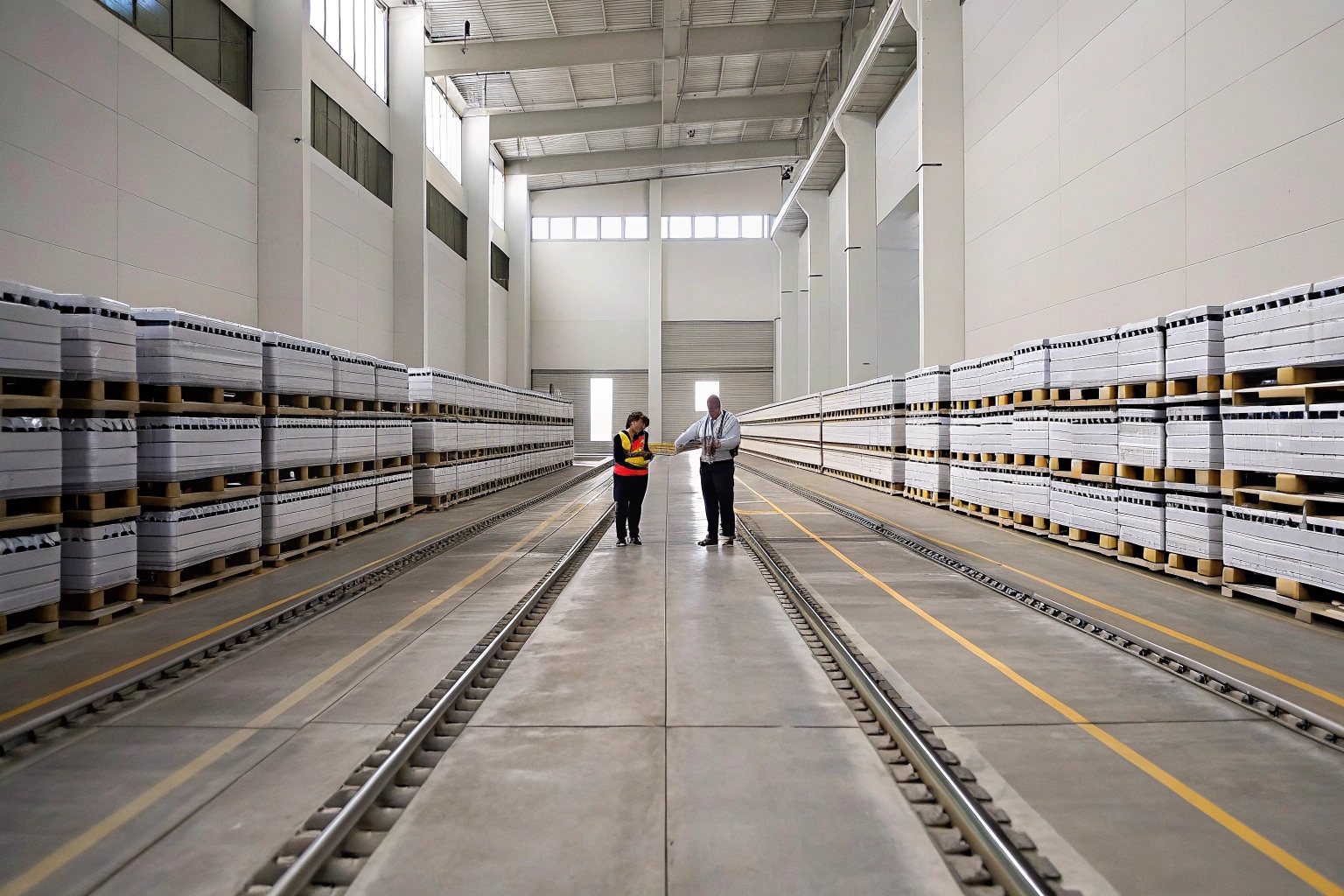
To ensure top quality, I always endorse third-party inspections 1 by SGS 2, TUV 3, or BV 4 for my shipments. Quality assurance is critical, and using reputable inspection agencies helps in preventing potential discrepancies.
Yes, I do accept third-party inspections. I cooperate fully with agencies like SGS, TUV, or BV to ensure undercarriage parts 5 meet the required standards before shipment. This practice includes providing access and documents for thorough inspections. My collaboration ensures transparency and accuracy, with inspection processes accommodated within the production schedule.
Reliable third-party inspections reinforce trust and confidence in the product. By adhering to standardized inspection practices 6, we maintain quality and meet customer expectations. Cooperation with recognized bodies is crucial for aligning with international trade norms and ensuring product reliability.
Can I define inspection checklists and sampling plans for my lots for my undercarriage parts?
If quality is compromised, my reputation suffers. I need clear definitions and plans for inspections to maintain consistent quality. This ensures every part meets high standards.
Absolutely, you can define inspection checklists and sampling plans 7 for your undercarriage parts. This allows you to specify requirements, including visual checks, dimensional verification, and material tests. Such practices ensure alignment with your quality goals and expectations.
Clear checklists ensure all quality aspects are covered during inspections. Detailed plans enhance the inspection process’s effectiveness, reducing variability and identifying issues proactively. Customized inspection criteria facilitate communication between the buyer, supplier, and inspectors, ensuring alignment of expectations.
Importance of Defined Checklists
Defining a checklist provides clarity in the inspection scope. It outlines visual checks, packing evaluations, and material tests. Such detail offers structure, making inspections thorough and consistent, preventing oversight.
| Checklist Element | Description |
|---|---|
| Visual Checks | Inspecting for visible defects |
| Dimensional Verification | Ensuring parts meet size specifications |
| Material Testing | Checking material quality and consistency |
With clear plans, both parties know what’s expected. This facilitates smooth inspections, ensuring parts meet all technical requirements before shipment. Collaboration here ensures fewer surprises and builds confidence in the final product quality.
Do you support pre-shipment and during-production checks for me for my undercarriage parts?
Driven by the need to anticipate issues, I see the value in both pre-shipment and during-production checks 8. These checks ensure only compliant products reach customers.
Yes, I support both pre-shipment and during-production checks for your undercarriage parts. They ensure early detection of potential issues, maintaining compliance with specifications before leaving the factory. This proactive measure guarantees product quality aligns with the standards set in the purchase order.
Conducting checks at multiple stages strengthens quality assurance. Pre-shipment ensures final confirmation, verifying that produced goods match your expectations. During-production checks prevent costly errors, identifying problems early. These measures offer a comprehensive view of product quality throughout the manufacturing process.
Balance Between Checks
Balancing these checks provides comprehensive oversight. Regular inspections during production and final checks before shipment ensure consistent quality. This layered approach enhances reliability and meets high customer standards.
| Inspection Stage | Purpose |
|---|---|
| During-Production | Identify issues early |
| Pre-Shipment | Confirm final compliance |
Understanding these stages helps anticipate potential issues and ensures that any non-conformance is addressed promptly. A consistent inspection schedule empowers you to meet rigorous quality demands without delays or compromises.
Will you host inspectors and provide full access to my job orders for my undercarriage parts?
Granting access to inspectors addresses transparency concerns 9. Transparency in manufacturing processes is central to building trust and confirming compliance with set standards.
I will host inspectors and provide full access to your job orders. This open-door policy ensures that inspections can be conducted thoroughly. All relevant documents and facilities are made available for comprehensive evaluations, confirming compliance with agreed standards.
Unrestricted access is key to a thorough inspection. By offering transparency, you can be confident that products are manufactured as per specifications. This builds long-standing trust, affirming commitment to quality and full disclosure.
Ensuring Transparency
By being transparent, I ensure credible results. This approach not only meets your expectations but reassures that nothing is concealed. Creating a welcoming environment for inspectors fosters honest assessments, reducing potential quality disputes.
| Access Privilege | Benefit |
|---|---|
| Full Facility Access | Comprehensive inspections |
| Documentation Access | Ensures detailed evaluations |
These practices underscore a commitment to cooperation, reinforcing our role as a reliable partner. Transparency aligns service delivery with expectations, confirming adherence to quality commitments.
If issues are found, my priority is corrective action. Immediate response and problem-solving are crucial for maintaining product integrity and customer trust.
Yes, corrective actions 10 are shared if inspectors find issues in your goods. Prompt sharing of these actions ensures that all defects are resolved quickly. This approach aligns with customer satisfaction goals, fostering transparency and continuous improvement.
Addressing concerns head-on keeps product standards consistent. Sharing corrective actions helps identify root causes, preventing recurrence. This continuous improvement cycle enhances product reliability, reinforcing quality assurances with effective solutions.
Implementing Solutions
Actionable solutions maintain integrity. By addressing identified issues quickly, operational disruptions reduce, and quality benchmarks are met consistently. Regular updates ensure aligned efforts to resolve defects, improving overall quality processes.
| Corrective Action Step | Objective |
|---|---|
| Root Cause Analysis | Identifying underlying issues |
| Action Implementation | Resolving detected defects |
Such structured approaches ensure non-conforming items are managed effectively. Customer concerns are prioritized to maintain high service standards and the integrity of our quality control processes.
Conclusion
Proactive cooperation with third-party inspections ensures consistent quality across shipments, aligning with global standards and building trust.
Footnotes
1. Overview of third-party inspections practices. ↩︎
2. Details about SGS inspection services. ↩︎
3. Learn about TUV certification processes. ↩︎
4. Information on BV quality inspections. ↩︎
5. Insight into undercarriage parts quality standards. ↩︎
6. Benefits of standardized inspection practices. ↩︎
7. How to create inspection checklists and plans. ↩︎
8. Guide to pre-shipment and production checks. ↩︎
9. Importance of transparency in inspections. ↩︎
10. Steps for effective corrective actions. ↩︎




